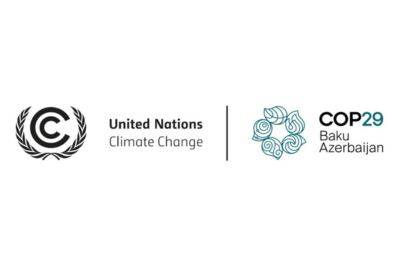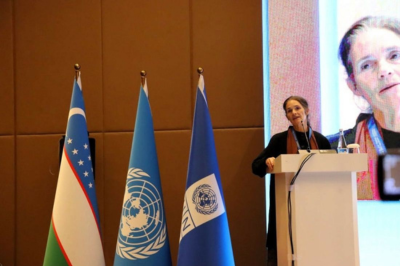Bakhrom Mirkasimov
Deputy rector on research and innovation, WIUT
Zakirov Bekzod
Director of Center for Policy Research and Outreach, WIUT
The higher education sector in Uzbekistan has undergone significant transformation in recent years. The changes reflect broader global trends, where education and research have been increasingly recognized as critical drivers of economic growth and sustainable development. Although Uzbekistan has made notable progress in modernizing education and research activities, there still remains a pressing need for a renewed approach in public administration and policy making. The challenges faced today are more complex and require a shift from traditional paradigms to innovative thinking in education and research.[1] The focus can no longer be solely on increasing access or producing research outputs. We must also prioritize the relevance, adaptability, and quality of educational and research frameworks to address real-world governance and public policy challenges.
This necessity is amplified by the country’s ongoing reforms and the increasing complexity of public administration in the modern era.[2] From digital transformation to sustainable development and public sector modernization, Uzbekistan must ensure that its education and research systems are equipped to prepare policymakers, administrators, and researchers with the skills and knowledge required to navigate these issues effectively. This article argues that while education and research in public policy and administration have progressed, there is an urgent need for new models and frameworks that emphasize innovation, interdisciplinary learning, and practical application to meet the evolving demands of governance in Uzbekistan.
The Need for Public Policy and Administration in Uzbekistan
The administrative framework in Uzbekistan still retains the centralized governance structures similar to other post-Soviet countries. Indeed, this system has effectively emphasized bureaucratic discipline and policy adherence so far. However, over the years it proves that the system lacks the flexibility and innovation. Most importantly, addressing the complex challenges of the modern era now requires evidence-based decision-making.[3] Recently, Uzbekistan started the reform process to significantly transform the existing system of public administration by introducing modern governance approaches. In this process, a need to modernized approach to public policy and administration through education and research has become more urgent. Contemporary issues such as globalization, climate change, and technological disruption demand a governance system capable of adapting to rapid changes and addressing complex challenges.
There are numerous challenges that Uzbekistan’s public administration currently faces. Such complex issues, including changing socio-economic conditions, economic diversification, digital transformation, and public sector modernization, require a dynamic and skilled public administration workforce. Uzbekistan’s growing integration into global markets and institutions, such as its accession process to the World Trade Organization (WTO), further emphasizes the importance of aligning its governance standards with international norms.[4] However, the inefficiencies of the legacy system still persist. Bureaucratic inertia, overlapping responsibilities, and resistance to innovation in public sector hinder effective governance.[5] These issues are compounded by specific administrative gaps, such as ineffective intergovernmental coordination, overlapping functions within administrative bodies, weak local governance, and limited fiscal decentralization. Furthermore, Uzbekistan is yet to fully integrate digital transformation such as AI and big data into public services, despite their potential to enhance decision-making and service delivery. A critical factor is the need for continuous training to ensure civil servants are equipped to address evolving global governance and technological demands.
How can a renewed approach help solve these complex issues in Uzbekistan? A modernized approach to public policy education and research can address many of Uzbekistan’s challenges. Evidence-based policymaking, informed by rigorous research, can guide the way that Uzbekistan reforms the system of public administration, improving intergovernmental coordination, public service delivery and anti-corruption measures. There is a definite need for evidence-based research in promoting new reform activities such as improving local governance and fiscal decentralization as raised important policy change recently.[6] Educational programs emphasizing digital transformation in governance will equip civil servants with the skills needed to leverage technology effectively. Training programs can also clarify the roles and mandates of ministries, fostering collaboration and reducing inefficiencies. Local governments can be strengthened through education and research on best practices in decentralization, which will enhance their autonomy and effectiveness.
Global Trends in Educating and Training Civil Servants
As governance challenges grow increasingly complex, countries worldwide are recognizing the importance of preparing the civil servants with advanced education, practical training, and continuous professional development. A new global trend emphasizes educating future cohorts of public administrators in renowned universities and fostering innovation through centers of excellence. Neighboring country Kazakhstan and others like Singapore, and South Korea have adopted forward-thinking approaches to education, research and training in public administration, which can provide valuable lessons for Uzbekistan.
The case of Singapore: a model of evidence-based policy innovation and administration
Singapore is often cited as a global benchmark for excellent public administration. The civil service in the country is known for its efficiency, meritocracy, and innovation. The country’s success stems from its commitment to rigorous education and research in public policy. Through rigorous academic training and continuous learning, civil servants are equipped to implement research-driven policies. Civil servants undergo rigorous academic training, often at prestigious universities like the National University of Singapore (NUS) and Nanyang Technological University (NTU), as well as international institutions. Analytical skills are cultivated through this education, enabling public officials to tackle complex problems with pragmatic, research-backed solutions.
The government also emphasizes lifelong learning, offering specialized courses at the Civil Service College (CSC) to continuously upgrade skills in areas like policy analysis, leadership, and digital transformation.[7] Training is extensive, starting with foundational programs at the CSC and advancing to specialized mid-career courses in public finance, policymaking, and digital governance. Senior officials gain global perspectives through international programs at institutions like Harvard or INSEAD. This lifelong learning approach ensures adaptability and effectiveness in addressing emerging challenges. Promotion is performance-driven, based on leadership ability, innovation, and measurable impact. Structured assessments and leadership programs, such as the Management Associates Program (MAP), prepare promising individuals for senior roles. This process ensures that capable leaders drive Singapore’s governance and policy innovation.
What sets Singapore apart is its seamless integration of academic research into policymaking, creating a governance model driven by evidence and innovation. The government collaborates with universities, research centers, and think tanks to address challenges like housing, transportation, and climate resilience, ensuring forward-looking and research-grounded policies. For instance, partnerships with the Center for Liveable Cities (CLC) and the National University of Singapore (NUS) have shaped public housing policies, with over 80% of Singapore’s population living in Housing and Development Board (HDB) flats.[8] Research on urban density, social integration, and sustainability has influenced eco-friendly HDB designs, including solar panels and smart waste systems. Similarly, collaborations with the SMART (Singapore-MIT Alliance for Research and Technology) have improved transportation systems through real-time data analytics, optimizing traffic flow, predicting commuter patterns, and advancing autonomous vehicle trials.[9] These efforts exemplify Singapore's commitment to integrating research into innovative policymaking.
In short, Singapore’s approach highlights the role of research and education in fostering innovation and ensuring efficient governance. The country’s emphasis on integrating research into decision-making processes has enabled it to maintain a highly responsive and adaptive public administration system.
Designing new approach to research and education in public policy and administration
In conclusion, Uzbekistan can draw significant insights from these countries in its efforts to modernize public administration education and training to address its evolving governance challenges. In the way of adopting the new approach, the government can encourage universities to establish dedicated public policy schools at undergraduate and graduate levels to produce analytically prepared professionals. Undergraduate programs can offer multidisciplinary training in governance, economics, and data analytics. Similarly, graduate programs can focus on advanced policy design, strategic planning, and leadership. Collaborations with renowned institutions like Singapore’s Lee Kuan Yew School can enhance these efforts by integrating global expertise.
In addition to formal education, specialized training centers for civil servants should be introduced, modeled on successful systems. These centers can offer focused programs on public management, digital transformation, AI and strategic governance. Admission and promotion should be based on merit, fostering professionalism and improving the public image of civil servants. Practical training methods, including simulations and case studies, can prepare officials for real-world challenges while emphasizing the value of ethical and effective governance.
Finally, Uzbekistan can cultivate a culture of evidence-based research to support administrative and governance innovation. Universities, think tanks, and government agencies should collaborate to produce actionable research and pilot new policy approaches through innovation labs. Training civil servants to interpret and apply research findings in policymaking will ensure data-driven decisions. Establishing research hubs and integrating these into the governance system will align Uzbekistan’s policies with global best practices, ensuring their effectiveness and adaptability.
[1] Noweski, C., Scheer, A., Büttner, N., von Thienen, J., Erdmann, J. and Meinel, C., 2012. Towards a paradigm shift in education practice: Developing twenty-first century skills with design thinking. Design thinking research: Measuring performance in context, pp.71-94.
[2]https://www.oecd-ilibrary.org/docserver/137ce911-en.pdf?expires=1732691668&id=id&accname=guest&checksum=2BC7FD8FA9543B768FF7C433B1BB288C
[3] https://www.sciencedirect.com/science/article/pii/S0006320723004056
[4] https://daryo.uz/en/2024/10/18/uzbekistan-steps-up-efforts-to-join-wto-by-2026-faces-regulatory-hurdles
[5] https://www.oecd-ilibrary.org/docserver/137ce911-en.pdf?expires=1732691668&id=id&accname=guest&checksum=2BC7FD8FA9543B768FF7C433B1BB288C
[6] https://thediplomat.com/2024/11/navigating-the-challenging-path-of-local-governance-reform-in-uzbekistan/
[7] https://www.soumu.go.jp/main_content/000336352.pdf
[8] https://www.clc.gov.sg/docs/default-source/urban-systems-studies/uss-built-by-singapore.pdf
[9] https://www.intellistride.com/blog/how-singapores-smart-traffic-system-is-redefining-urban-mobility/






